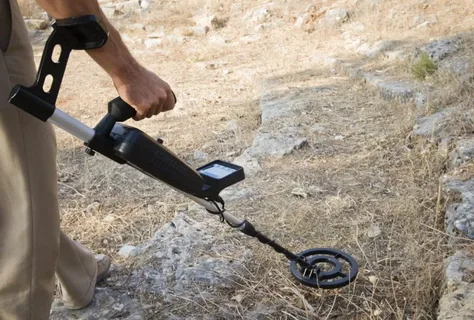Gold mines in the world are not only an important source of wealth and economic stability, but also a fascinating subject of exploration and study. In this comprehensive guide, we will delve into some of the top gold mines in the world, uncovering the history, production, and impact of these renowned sites. Join us as we embark on a journey to explore the inner workings of these gold mines and gain a deeper understanding of their significance on a global scale. Whether you are a mining enthusiast, an investor, or simply curious about the world of gold mining, this guide will provide you with valuable insights and knowledge about some of the most prominent gold mines in the world.
Exploring the Top Gold Mines in the World: A Comprehensive Guide provides detailed information about the biggest and most productive gold mines across the globe. The guide covers the history, geology, production, and operational aspects of each mine, offering valuable insights into the gold mining industry. It is a valuable resource for investors, researchers, and anyone interested in learning about the top gold mines worldwide.
The Top 10 Richest Gold Mines in the World

1. Grasberg Mine, Indonesia: The largest gold mine and the third largest copper mine in the world, Grasberg produces around 2.8 million ounces of gold annually. 2. Pueblo Viejo Mine, Dominican Republic: Operated by Barrick Gold and Newmont, Pueblo Viejo is one of the newest and most profitable gold mines globally. 3. Olimpiada Mine, Russia: Located in Eastern Siberia, Olimpiada is one of the largest gold mines in Russia and has been in operation since 1996. 4. Cortez Mine, USA: Owned by Barrick Gold, the Cortez mine in Nevada is one of the largest and most productive gold mines in the United States. 5. Lihir Mine, Papua New Guinea: Operated by Newcrest Mining, Lihir is one of the largest known gold deposits globally, with reserves estimated at around 46 million ounces. 6. Muruntau Mine, Uzbekistan: One of the largest open-pit gold mines in the world, Muruntau has been in operation since 1967 and is owned by the Navoi Mining and Metallurgy Combinat. 7. Goldstrike Mine, USA: Located in Nevada, the Goldstrike mine is one of the largest gold mines in North America and is operated by Barrick Gold. 8. Super Pit/Kalgoorlie-Boulder, Australia: One of Australia's largest open-pit gold mines, the Super Pit produces around 700,000 ounces of gold annually. 9. Boddington Mine, Australia: Owned by Newmont, the Boddington mine in Western Australia is one of the largest gold mines globally and has a production capacity of around 800,000 ounces of gold per year. 10. Yanacocha Mine, Peru: Operated by Newmont, the Yanacocha mine is one of the largest gold mines in South America and has been in operation since 1993.
Exploring the Largest Gold Mines Across the Globe

Exploring the largest gold mines across the globe provides insight into the scale of gold production and the impact on local economies and environments. These mines are often located in remote areas and are significant contributors to the global gold supply. Understanding the operations and challenges of these mines can shed light on the complexities of the gold mining industry and its role in the global economy. Additionally, examining the social and environmental implications of large-scale gold mining can inform discussions about sustainable resource extraction and responsible mining practices.
A Look Inside the Most Productive Gold Mines Worldwide

A Look Inside the Most Productive Gold Mines Worldwide highlights the top gold mines and their production levels, including those in countries such as China, Russia, Australia, and the United States. The article explores the methods and technologies used in these mines to extract gold efficiently and provides insights into the economic and environmental impacts of their operations. Additionally, it discusses the future outlook for gold mining and the potential for continued productivity in the industry.
Uncovering the Hidden Treasures of Gold Mines Around the World

Uncovering the Hidden Treasures of Gold Mines Around the World is a fascinating exploration into the history, technology, and culture of gold mining. This comprehensive guide provides insights into the various mining techniques used in different parts of the world, as well as the environmental and social impact of gold mining. Additionally, it delves into the economic significance of gold mining and its role in shaping global trade and finance. Whether you're a history buff, an amateur geologist, or simply curious about the world of mining, this book offers a captivating look into the hidden world of gold mines.
The Impact of Gold Mines on Global Economy and Environment
Gold mining has significant impacts on both the global economy and the environment. Economically, gold mines contribute to the overall global economy through the production and sale of gold as a precious metal. The mining industry also provides employment and investment opportunities in the regions where gold mines are located. However, the environmental impacts of gold mining are considerable. Deforestation, soil erosion, and contamination of water sources are common consequences of gold mining activities. Additionally, the use of toxic chemicals such as cyanide and mercury in the extraction process can lead to long-term environmental damage. The disruption of ecosystems and habitats due to mining activities also has a negative impact on biodiversity. Efforts are being made to mitigate these impacts through sustainable mining practices and stricter regulations. However, the global demand for gold continues to drive the expansion of gold mining operations, highlighting the ongoing tension between economic prosperity and environmental preservation. Overall, the impact of gold mines on the global economy and environment is a complex and multifaceted issue that requires careful consideration and management.
The Evolution of Gold Mining Technology in Various Mines
See also: Exploring the Relationship Between Geology and Mining
Gold mining technology has evolved significantly over time, particularly as mining operations have moved from traditional methods to more modern and efficient techniques. In various mines around the world, advancements in technology have played a crucial role in increasing productivity, reducing environmental impact, and improving safety for workers. One of the major technological advancements in gold mining is the introduction of automation and mechanization in mining operations. This has led to the development of sophisticated mining equipment such as drills, excavators, and haul trucks that can efficiently extract gold from deep underground mines. Additionally, the use of advanced technologies such as GPS, remote sensing, and 3D modeling has greatly improved the efficiency and accuracy of exploration and resource estimation, resulting in more successful mining operations. In terms of environmental sustainability, advancements in gold mining technology have led to the implementation of innovative practices such as cyanide-free extraction methods and water recycling systems, which minimize the impact of mining on the surrounding ecosystem. Furthermore, the use of advanced monitoring and control systems has helped in effectively managing and mitigating environmental risks associated with gold mining. Safety in gold mining has also seen significant improvement with the introduction of technologies like proximity detection systems, digital tracking of personnel and equipment, and automated health and safety monitoring. These technologies have helped in reducing the risks associated with mining operations and ensuring the well-being of workers. Overall, the evolution of gold mining technology has revolutionized the industry, making it more efficient, sustainable, and safe. As technology continues to advance, it is expected that gold mining operations will become even more productive and environmentally friendly in the years to come.
Challenges Faced by Workers in Deep-Sea Gold Mines
Workers in deep-sea gold mines face a multitude of challenges, including extreme working conditions, physical and mental health risks, and limited access to emergency medical care. The deep-sea mining environment can be harsh, with high pressure, low temperatures, and limited visibility, posing significant challenges for maintaining machinery and equipment. Additionally, the isolation and confinement of working at sea for extended periods can contribute to mental health issues such as anxiety and depression. These challenges make deep-sea gold mining an incredibly demanding and hazardous occupation.
The Untold Stories of Abandoned Gold Mines in Remote Locations
The untold stories of abandoned gold mines in remote locations often involve the challenges and dangers faced by early miners, the environmental impact of mining activities, and the enduring legacy of these sites. These mines are often located in rugged and inaccessible areas, making them difficult to explore and study. Some may have been abandoned due to declining ore quality, while others were forced to shut down due to conflicts with local communities or government regulations. Many of these abandoned mines remain as silent reminders of the gold rush era, attracting adventurers and historians who seek to uncover their hidden tales.
The Fascinating History of Ancient Gold Mines and Civilizations
The history of ancient gold mines and civilizations is a fascinating subject that spans thousands of years. Gold has been valued by various ancient civilizations for its rarity, beauty, and economic significance. Some of the earliest known gold mines were operated by the Egyptians in the Nile Valley as early as 4000 BC. The Egyptians used gold for jewelry, religious purposes, and as a form of currency. Further east, the Indus Valley Civilization in what is now modern-day India and Pakistan also had a thriving gold trade. The ancient Greeks and Romans also mined for gold, and it played a significant role in their economies. One of the most famous ancient gold mining civilizations is the Inca Empire of South America. The Inca mined for gold high in the Andes mountains and used it for religious and ceremonial purposes. Gold mining and the civilizations that relied on it have left a lasting impact on the world. The techniques and technologies developed by these ancient civilizations laid the foundation for modern gold mining practices. The wealth generated by gold mining played a crucial role in the rise and fall of empires and continues to shape global economies today.
Investing in Gold Mines: Opportunities and Risks in the Industry
Investing in gold mines can be a lucrative opportunity for investors looking to capitalize on the high demand for gold. With the steady price of gold and the potential for large returns, investing in gold mines can be an attractive option. However, it's important to weigh the risks associated with this industry. One of the main risks of investing in gold mines is the volatility of the market. Gold prices can fluctuate greatly, impacting the profitability of gold mining companies. Additionally, the cost of production and labor can also affect the bottom line for investors. Environmental and political factors can also play a significant role in the success of gold mining investments. Regulations and policies surrounding mining practices can impact the feasibility and profitability of gold mines. Furthermore, the inherent risks of mining, including accidents, operational challenges, and geological uncertainties, can pose significant risks to investors. It's essential for investors to conduct thorough research and due diligence before investing in gold mines to mitigate these risks and maximize potential returns.
In conclusion, the exploration of the top gold mines in the world has provided a comprehensive guide to understanding the significance and impact of these mining operations. From the depths of South Africa's Mponeng mine to the vast open-pit operation of Australia's Super Pit, the variety and scale of the world's gold mines are truly remarkable. These mines not only provide precious resources but also support local economies and communities. The global gold mining industry continues to play a crucial role in the world's economy and will undoubtedly shape the future of the precious metal market.
See also: Find Your Next Gold Detector Online: Top 5 Choices
